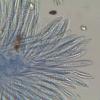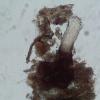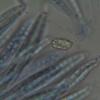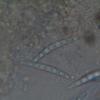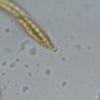
15-12-2025 21:11
 Hardware Tony
Hardware Tony
Small clavate hairs, negative croziers and IKI bb

15-12-2025 07:09
 Danny Newman
Danny Newman
indet. Rutstroemiaceae sp. on unk. fallen leavesMc

15-12-2025 15:54
 Johan Boonefaes
Johan Boonefaes
Unknown anamorph found on the ground in coastal sa

15-12-2025 15:48
 Danny Newman
Danny Newman
Melanospora cf. lagenaria on old, rotting, fallen

15-12-2025 07:05
 Danny Newman
Danny Newman
Pseudosclerococcum golindoi (det: Zotto)near Cosb

15-12-2025 11:49
 Danny Newman
Danny Newman
ITS sequences from the following two collections B

15-12-2025 12:34
 Danny Newman
Danny Newman
indet. Rhytismataceae on oak leafnear Purchase Roa

09-12-2025 12:06
 Andgelo Mombert
Andgelo Mombert
Bonjour,Je recherche l'article concernant Hypobryo
Diaporthales of dung
Peter Welt,
03-04-2009 16:49
 How a fungus that? We think Gnomoniella, but it fits no species. The spores have the dimensions of 18,5-23 x 3-4 µm. Gnomoniella euphorbiae - verrucosae Monod has similar spores, but are much wider (20-22,5 x 5,3-6 µm). Also fit the data on the habitat is not (Euphorbia verrucosa). This plant is not for us. I have this fungus on dung of roe deer found.
How a fungus that? We think Gnomoniella, but it fits no species. The spores have the dimensions of 18,5-23 x 3-4 µm. Gnomoniella euphorbiae - verrucosae Monod has similar spores, but are much wider (20-22,5 x 5,3-6 µm). Also fit the data on the habitat is not (Euphorbia verrucosa). This plant is not for us. I have this fungus on dung of roe deer found. Peter Welt
David Malloch,
04-04-2009 16:50

Re:Diaporthales of dung
Hello Peter,
How about the Lasiosphaeriaceae? These are common on dung. Sabine Huhndorf's web page at
http://www.fieldmuseum.org/research_Collections/botany/botany_sites/ascomycete/peetwebpages/peettitle.htm
discusses a number of genera that might be worth considering.
Dave
How about the Lasiosphaeriaceae? These are common on dung. Sabine Huhndorf's web page at
http://www.fieldmuseum.org/research_Collections/botany/botany_sites/ascomycete/peetwebpages/peettitle.htm
discusses a number of genera that might be worth considering.
Dave
Peter Welt,
04-04-2009 19:27

Re:Diaporthales of dung
Thanks Dave for your reply.
I know many genres to dung because I along with Norbert Heine coprophilous fungi edit and publish. Also your work along with Cain, I know.
But I think that the form of the fungus (long neck) and the construction of the asci (apical ring) for more Diaporthales speaks. I already had a suspect in the genus, Conioscyphascus (Studies in Mycology 50:95-108), but there are paraphyses there, which I found in my could not be ascertained. In addition, the spores are septate.
At what a genus because they have thought it?
Peter
I know many genres to dung because I along with Norbert Heine coprophilous fungi edit and publish. Also your work along with Cain, I know.
But I think that the form of the fungus (long neck) and the construction of the asci (apical ring) for more Diaporthales speaks. I already had a suspect in the genus, Conioscyphascus (Studies in Mycology 50:95-108), but there are paraphyses there, which I found in my could not be ascertained. In addition, the spores are septate.
At what a genus because they have thought it?
Peter
